Kyrgyz National Cuisine
Kyrgyz National Cuisine
Kyrgyz National Cuisine is a reflection of centuries-old history and traditions of Kyrgyz people, where every flavor and aroma tells about life closely connected to nature and hospitality. At its core, Kyrgyz cuisine is simple and organic, made with fresh ingredients, often sourced directly from pastures and gardens, and many dishes could be prepared outdoors.
One of the signature dishes of Kyrgyz cuisine is beshbarmak, a traditional dish that embodies familial unity and closeness. Finely chopped meat, tender and perfectly cooked, is served on large platters with noodles and topped with a fragrant broth that varies in flavors from spicy to mild, from simple to exotic. Each serving of beshbarmak is not just a meal; it is a ritual infused with care and thoughtfulness.
And who could forget kumis, a drink full of history that symbolizes the wisdom of the steppes? This slightly sour beverage made from mare’s milk has not only a unique taste, but also incredible healing properties. In every drop, there is energy of endless horizons, fresh wind, and freedom.
Other delicious and hearty dishes include manti (steamed dumplings), kuurdak, made with meat and potatoes, and a variety of other lamb, beef, and veggie dishes. They are usually accompanied by savory soups, enriched with spices and herbs that create a warm atmosphere around the table. And there will always be a cup of hot and fragrant tea served before and after every meal, with the hint of mint and mountain herbs filling the air.
Kyrgyz cuisine is not just food; it is a part of life, where every ingredient and every detail holds a deep meaning, connected to nature, traditions, and love for the land and its people.
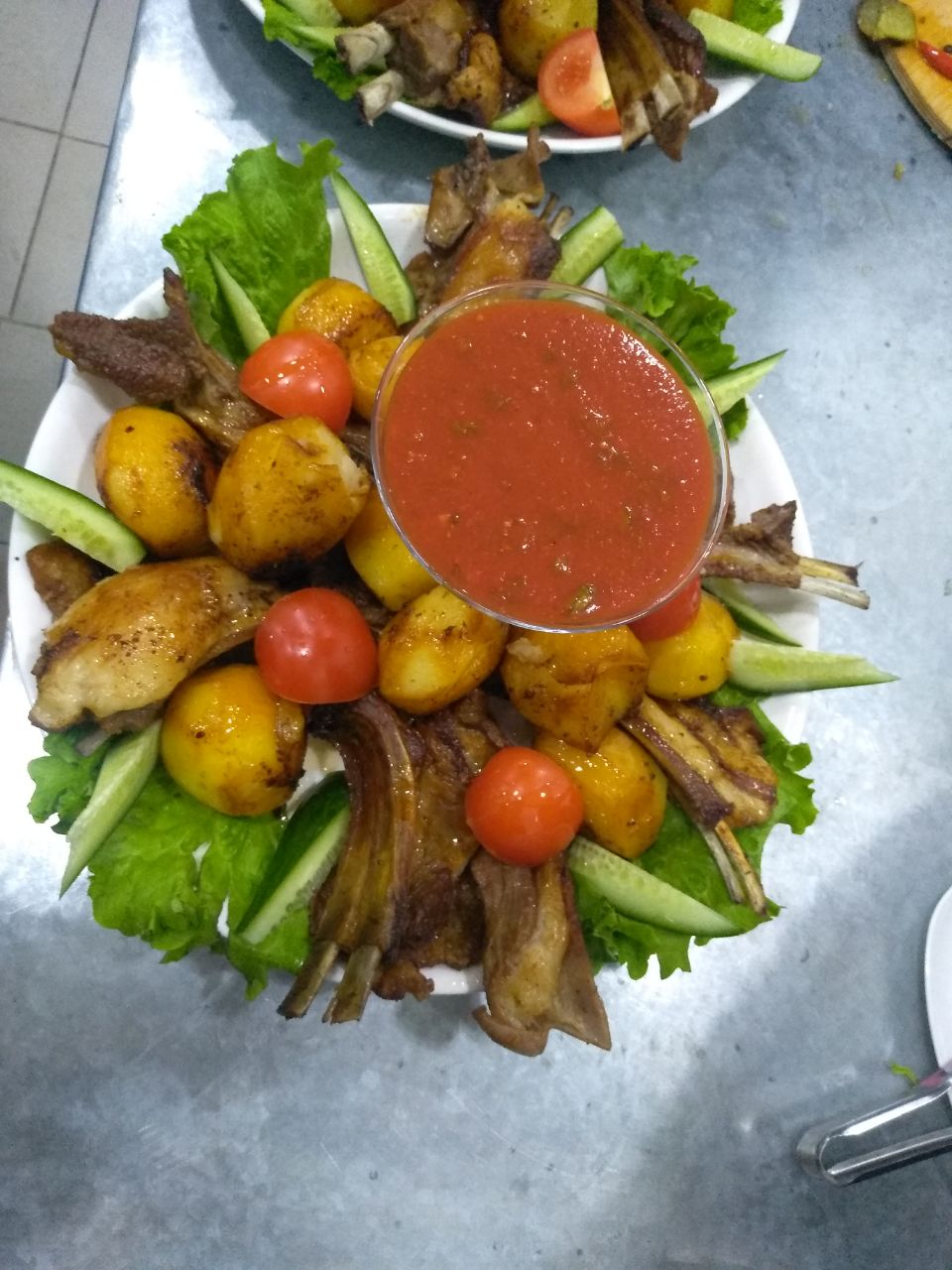
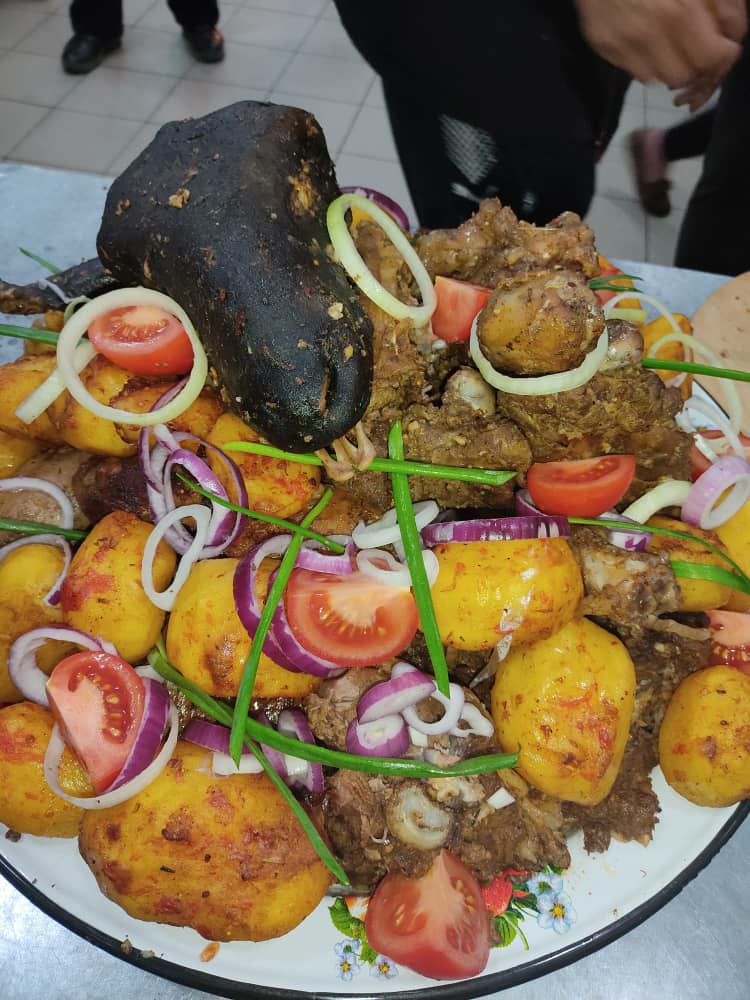

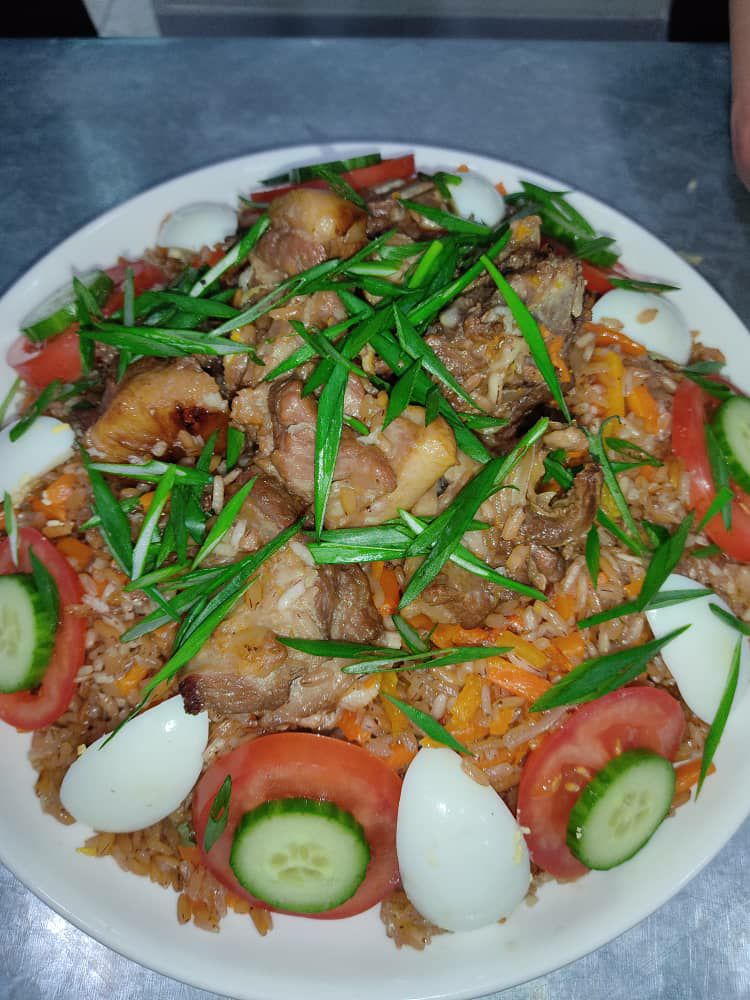
Kok-Boru
Kok-Boru
Kok-Boru is a traditional game that is an important part of the cultural heritage of the peoples of Central Asia. The history of Kok-Boru dates back to ancient times when games were used to train warriors and resolve disputes between tribes. Over the centuries, it has remained not only as a form of entertainment, but also as an essential element of military training and social life of nomadic people.
In ancient times, the carcass of a real goat or sheep was used for the game, but nowadays it is replaced by a model of it. Horseback riders compete to capture the carcass of the goat and deliver it to a designated area on the field, known as the “cauldron” or “kazan.” To succeed, players need both good horseback riding skills and a deep mental connection with their horses, as the game involves collisions, captures, and blockages.
The game is played in an open field and is often accompanied by enthusiastic spectators. In Kok-Boru, individual success is important, but team coordination is essential too, as victory requires not only capturing the goat, but also protecting it from competitors’ attacks.
The variations of the game and the rules may differ slightly depending on the region. In Kyrgyzstan, for example, the game is often played at big tournaments where the best teams compete. Different countries may have special traditions or additions to the basic rules; however, the core principle remains unchanged. In Kok-Boru, players must demonstrate not only physical strength, but also strategic thinking, teamwork, and, of course, horseback riding mastery.
Today, Kok-Boru continues to be a popular part of cultural life in Central Asia. Each year the game attracts more participants and spectators, and is a part of the modern sports calendar in these countries. It also plays a crucial role in shaping the character of young people, helping them develop physical and moral qualities such as resilience, respect for traditions, and honesty.
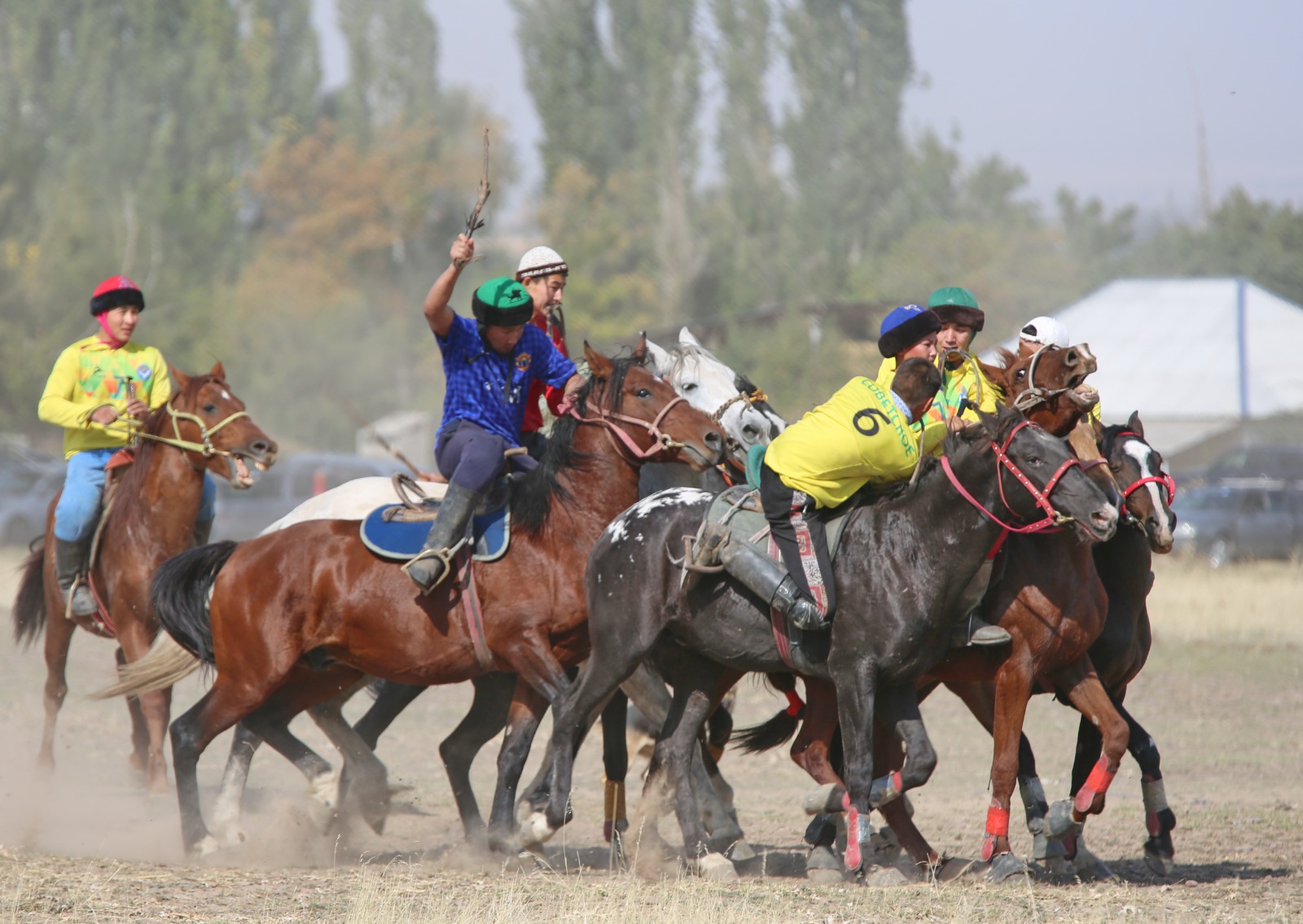
Kyz Kuumai
Kyz Kuumai
Kyz Kuumai, translated as “catch the girl,” is one of the most colorful and exciting games of the Kyrgyz people, filled with excitement, agility, and a playful spirit. In this game the participants, both girls and boys, demonstrate their courage, horsemanship, and physical skills in a speedy pursuit.
The essence of the game is simple but exciting where a girl rides ahead first and a young man must catch up and kiss her. However, unlike a simple chase, in this one girls are very swift and agile, and their tactics may include maneuvers and deceptive movements to throw off the pursuers from their tail.
The game is a form of horseback competition too, where it’s important not only to ride fast, but also to calculate the speed precisely, to maintain balance, and to avoid traps set by the opponent. Each movement in Kyz Kuumai is filled with emotions as the tension builds with every step of the chase and every turn can be decisive.
Kyz Kuumai captivates with the excitement and physical endurance of the players, with folklore and traditions that permeate the atmosphere. For the Kyrgyz, it’s not just a pastime but a part of their cultural heritage, embodying the free spirit and its beauty. Despite the competition, there is always a sense of respect and joy between the participants, making each contest a true celebration.

Hunting with a Golden Eagle
Hunting with a Golden Eagle
Hunting with a Golden Eagle is an ancient art where the forces of nature, man, and the mighty bird intertwine. The wind pushes clouds across the boundless sky as the hunter and his faithful companion, the golden eagle, prepare for action. This moment, when man and bird become one, feels almost sacred and magical. The hunter’s gaze, focused and confident, meets the dark penetrating stare of the eagle, and, as if by an invisible thread, they understand each other.
From the very first moment, the eagle’s flight is like a swift whirlwind, powerful and graceful. It soars in the sky, high above the mountains, catching every air current, while the hunter, standing on the ground, watches its movement, feeling how nature around him has condensed into this single act.
And then, when the prey appears on the horizon, the eagle dives down with a fierce cry, instantly reaching its target. The air fills with sounds: the whistle of wings, the rush of wind, and the quiet rustle of the earth as the bird catches its prey. The hunter, unhurried, follows every movement, knowing that his partner will not make a mistake. With skill and precision, the eagle grabs the prey and everything ends as quickly as it began.
This is not just hunting, this is an alliance, where man and nature merge in a single surge, and every moment of this ancient art feels magical, leaving an indelible mark on the soul.

Hunting with the Taigan dog (Kyrgyz Greyhound)
Hunting with the Taigan dog (Kyrgyz Greyhound)
Hunting with the Taigan dog (Kyrgyz Greyhound) is a unique and ancient tradition that holds special significance in Kyrgyzstan. The Taigan is an indigenous Kyrgyz dog breed from the ancient group of Central Asian greyhounds, developed in the extreme, mountainous regions of the Tien Shan. It was specifically bred for hunting and is known for its exceptional agility, speed, and keen sense of smell. These greyhounds hunt small game such as hares, badgers, and occasionally, even bigger prey.
Hunting with the Taigan is a fusion of the skills and instincts of both the dog and the hunter, that requires maximum cooperation between them. A small group of these dogs is used working together as a team to chase the prey over long distances.
The Taigan can track the scent of game for several kilometers and sometimes corner it into a trap. It is important to note that the dog works not only on his instincts, but also on following the commands of the hunter, who controls its actions. When capturing the prey, the dog uses its strength and agility to prevent it from escaping.
The hunter must understand the behavior of his dog, recognize its signals, and be ready to intervene at the right moment to ensure a successful hunt. This requires experience, patience, and mutual understanding, as hunting is not just about capturing the prey, but also the ability of partnership with the animal.
Hunting with the Kyrgyz greyhound is a wholesome culture, where the essence lies in a deep respect for nature, animals, and the loyal companion by one’s side.
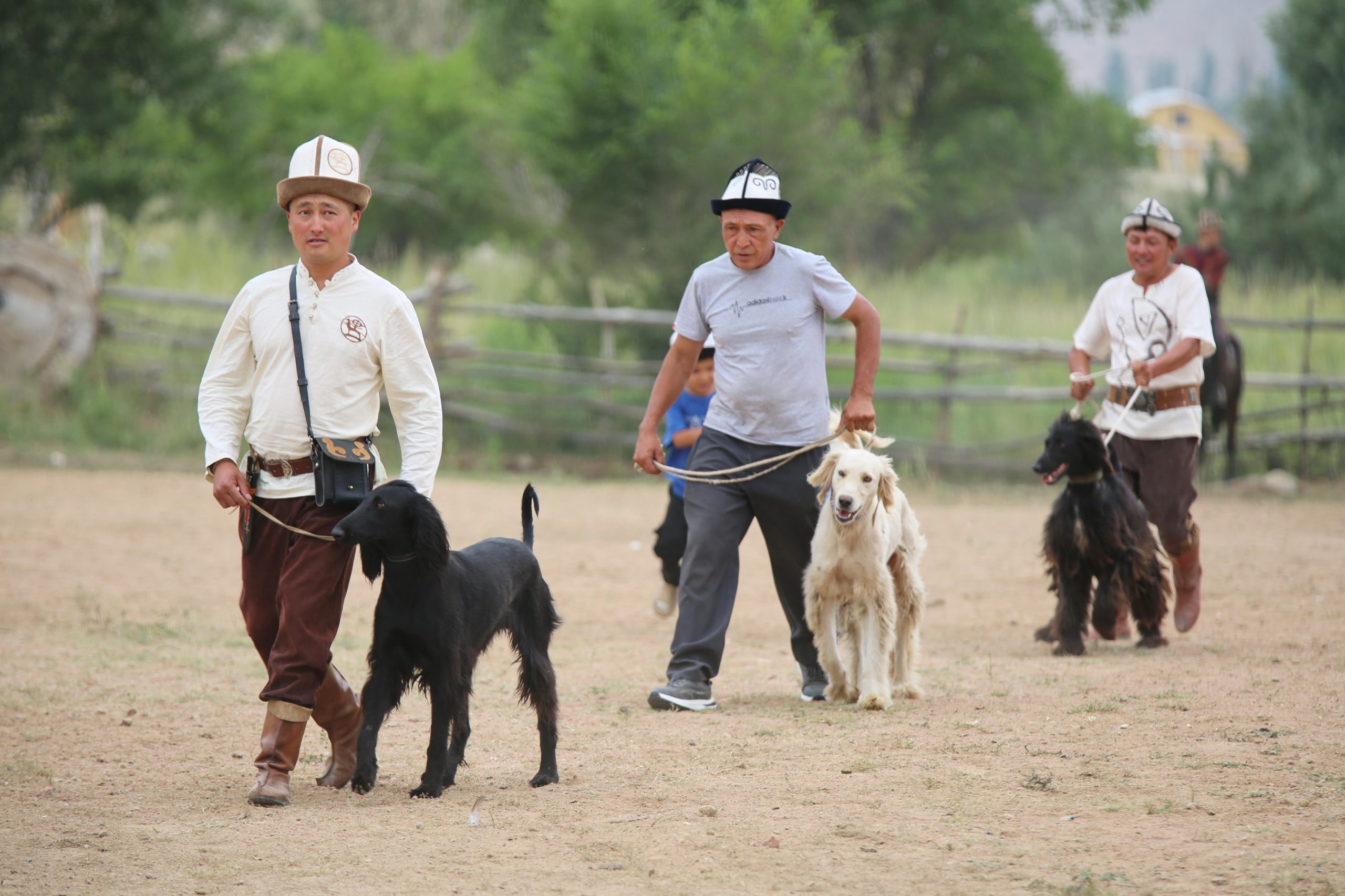
Archery
Archery
Archery has been widely practiced in the past among the peoples of Central Asia. Today, this historical activity is being revived as a sporting and cultural event. Participants, dressed in traditional clothing, use handmade bows, adding authenticity to the experience. This sport requires precision, strength, and concentration and is usually showcased at festivals and cultural events, often alongside eagle hunting demonstrations.
Both of these spectacles are commonly held at ethnofestivals and holidays, such as Nowruz, or in ethnocomplexes, where tourists can try their hand at archery and observe the majestic eagles in action.
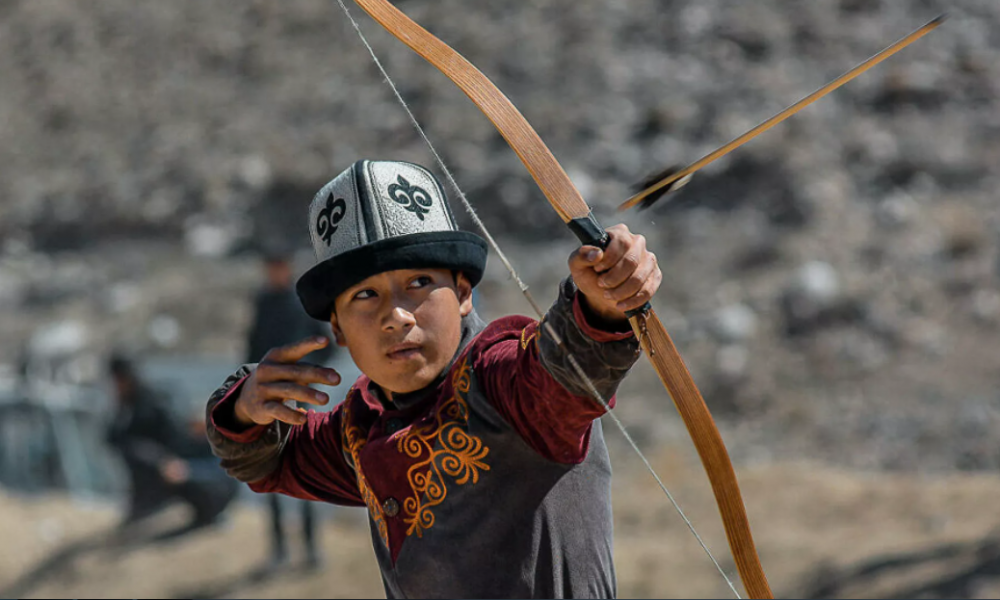
Kayaking on Issyk-Kul lake
Kayaking on Issyk-Kul lake
Kayaking on Issyk-Kul lake is a unique adventure that combines physical activity with picturesque surroundings of crystal-clear waters of the lake and breathtaking views of snow-capped mountain peaks. There are calm areas that are perfect for those who would like to try it for the first time, while the more open waters are ideal for those who are after greater excitement. It’s also a great way to explore the sandy beaches and secluded corners of the lake that are inaccessible from the shore. Kayaking on Issyk-Kul is not only a physical challenge, but also an opportunity to immerse yourself in nature.
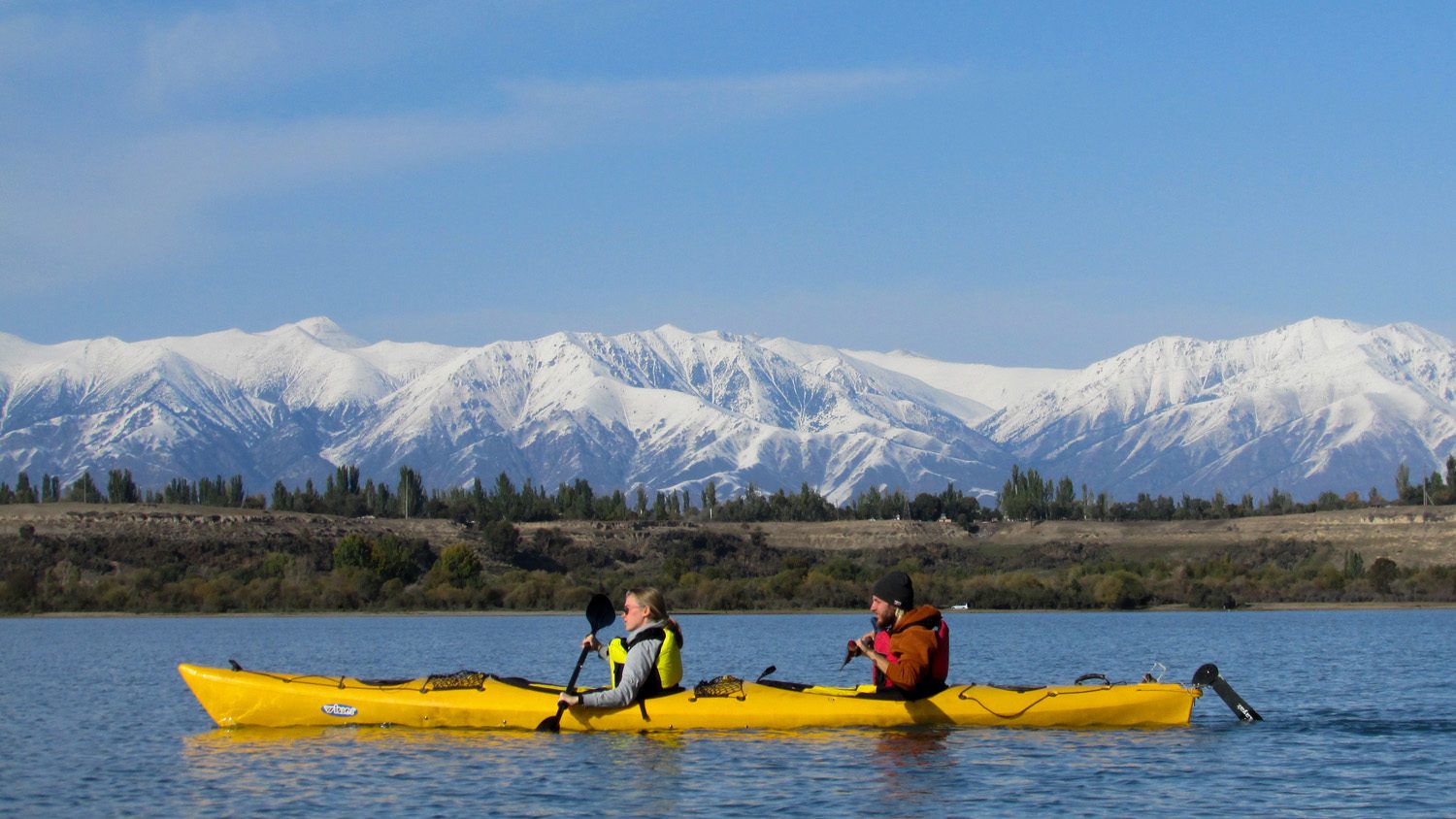
The rodelbahn at the Orlovka Ski Resort
The rodelbahn at the Orlovka Ski Resort
The rodelbahn at the Orlovka Ski Resort is a unique attraction, featuring a toboggan track that stretches 860 meters, making it the longest in Kyrgyzstan. On special sleds with wheels visitors can reach speeds up to 70 km/h, controlling the speed by using built-in brakes. The route includes exciting curves and provides stunning views of the surrounding mountains.
For visitors’ convenience, there is a cable car that makes the attraction accessible, including children. The rodelbahn is perfect for adrenaline seekers, as well as, for those who prefer a more leisurely descent.
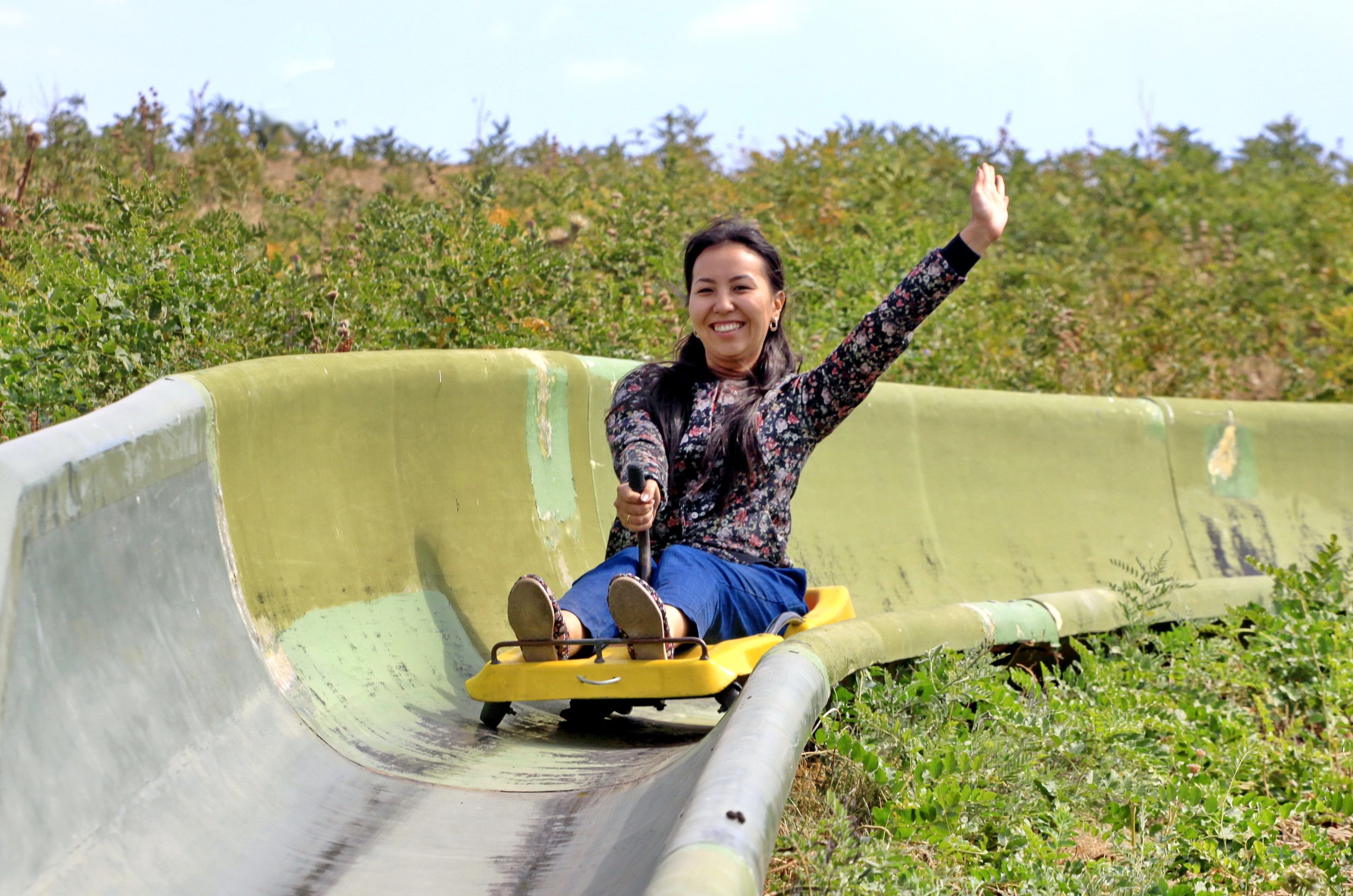
Night in a yurt in the mountains and on the lake shore
Night in a yurt in the mountains and on the lake shore
A night in a yurt in the mountains is a moment when everything around you freezes, consumed by the boundless silence of the highlands. The sky, sprinkled with billions of stars, seems endless, and in its silent depth, you can only hear the gentle whisper of the wind playing with the tall grasses and rocky cliffs. The sounds of the night in the mountains are like deep breaths of nature, and it feels as if the earth itself is also resting, allowing everything around to dissolve into the night. There is only a sense of connection with this pristine, majestic nature that surrounds the yurt, lulling you with its powerful silence. Inside the softly lit yurt, there is a special atmosphere of comfort and warmth. The walls, covered with woolen carpets and fabrics, create a sense of security and tranquility.

A night in a yurt by the shore is a moment when the world pauses and sinks into a magical silence. The gentle rustle of waves soothes the soul, while the cold air, filled with the scent of plants and water, brings a refreshing coolness. Inside the yurt the soft light from the fire on the central pole casts shadows on the carpets and fabrics, creating a cozy atmosphere. The stars, like precious stones, are scattered across the endless sky, and the moon reflects in the calm water, turning the lake into a mirror-like canvas. Inside the yurt it is warm despite the cool night, and the soft woolen carpets and blankets create a sense of protection from the outside world. Here, on the shore of Issyk-Kul, time seems to slow down, and you feel how the space around becomes whole and complete. The soft rustling of the wind at the top of the yurt, the sounds of distant night birds, and the whisper of the waves merge into a single melody that lulls you, making you forget all your worries. In this moment, every breath, every glance at the night sky or the glowing fire in the pit fills your heart with warmth and peace.


